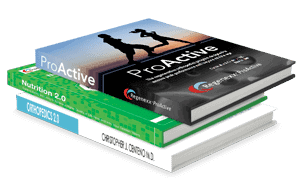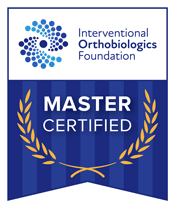Shoulder pain is the third most common reason patients seek medical advice for a musculoskeletal complaint. According to the article, Shoulder pain: diagnosis and management in primary care in the British Medical Journal, “chronicity and recurrence [of shoulder pain] are common.”1 One of the challenges with shoulder pain is how varied the diagnoses are.
Shoulder pain diagnoses range from bursitis to rotator cuff tendinosis, to biceps tendonitis, to labral tearing. Patients presenting with pain on the top, side, or back of the shoulder could be experiencing any one of these issues.
Common presentation includes pain with lifting the arm, and or inability to sleep without pain. In the case of specifically diagnosing the root cause of shoulder pain, it is important to work with a practitioner who will use orthopedic tests to specify which structures are involved. This specificity helps drive the specific, effective treatment of shoulder pathology.
However, when it comes to rehabilitating a shoulder injury the first step is to address a common root cause that is central to most shoulder issues. There are predictable postural patterns that lead to shoulder pain and the issue is called an improper length-tension relationship between the muscles of the chest, neck,and shoulders. This predictable postural pattern is called upper crossed syndrome and is defined by Vladmir Janda.2
Upper crossed Syndrome is defined by the following figure:

Upper crossed syndrome is represented by certain muscles being too tight and short, and other reciprocal muscles are weak and inhibited in their postural functions. These relationships of some muscles being too tight and some being too weak often leads to shoulder movement pattern issues, causing impingement, bursitis, biceps tendonitis, labral damage, or other shoulder diagnoses.
The first step in alleviating shoulder pain is to address the imbalance between the tight and weak muscles. The following list will illustrate the list of muscles that are involved, and the following exercises are suggested to help correct these imbalances to alleviate your shoulder pain.
The following neck and shoulder muscles are tight:
- Upper trapezius
- Pectoral muscles
- Biceps
The following muscles are weak:
- Deep neck flexors
- Rhomboids
- Middle and lower trapezius
For each of these imbalances, there are targeted exercises to work on the tightness and weakness in order to support the shoulder joint.
The following exercises4 provide a conservative, do-it-yourself regimen to help improve your shoulder pain before seeking invasive medical procedures or surgery. The following exercises could be performed in 15-20 minutes at home with minimal equipment (you may use a tennis ball, baseball, or lacrosse ball if you have one).
If the regimen is performed consistently four times a week for six weeks, and no improvement is appreciated, then it would be advised to pursue an evaluation with an orthopedic specialist. The content is not intended to be a substitute for professional medical advice, diagnosis, or treatment. Always seek the advice of your physician or another qualified health provider with any questions you may have regarding a medical condition.
Upper Trapezius Stretch

- Place one hand behind your buttock to lower your shoulder.
- Turn your head to the opposite side and look down.
- Gently pull down on your head with the other hand and maintain the position when you feel a stretching sensation.
- Hold stretch for 30-60 seconds
- Repeat.
Pec Stretch



- Stand up in front of an open doorway.
- Place your forearm along the wall.
- Lean your body forward until you feel a stretch across your chest and the front part of your arm.
- Place the arm lower than horizontal to emphasize the upper chest, place the arm perpendicular to stretch the middle portion, and place the arm higher than parallel to stretch the lower portion.
- Hold each stretch for 60 seconds
Laying-Down Bicep Stretch



- Lie horizontally on a rolled up towel or foam roller with your knees bent and feet flat on the ground. Your palms are facing up and your arms are abducted about 45 degrees with your body.
- Hold the position for 60-90 seconds
Chin Tuck



- Lie on your back with a pillow under your head.
- Tuck your chin inward and get yourself tall by pretending a rope is pulling you up from the back of your head.
- Push your head on the pillow and hold the tucked position for two seconds.
- Relax and repeat, completing two sets of 10 repetitions.
Scap Squeezes/ Brugger



- Stand up or sit with your arms relaxed by your side.
- Rotate your arms so your thumbs are pointing backward to open the chest.
- Squeeze the shoulder blades together, keep your chin tucked and hold this position for 2-5 seconds.
- Repeat, performing two sets of 10 repetitions
Low Row



- While sitting in a chair, place the central knot of a band in a door opposite to you, or have a loved one hold the center of the band securely.
- Hold both ends of the band.
- While drawing your shoulder blades together, open your arms at about 45 degrees while pulling on the band, squeezing your shoulder blades together.
- Hold for 2 seconds and repeat.
- Complete two sets of 10 repetitions.
We hope you find these exercises helpful. If you continue to experience pain, feel free to contact our offices to discuss your non-surgical options.
Annotations










